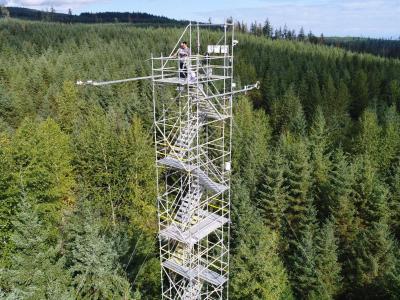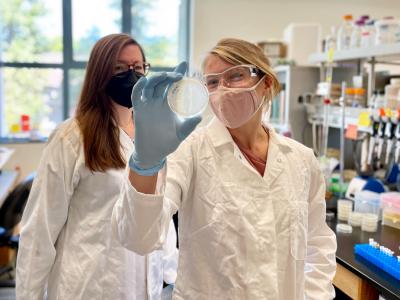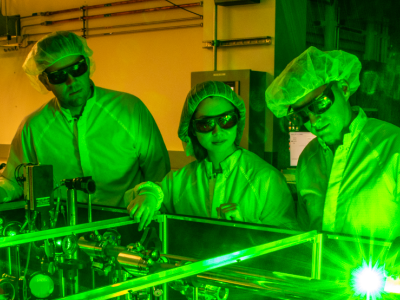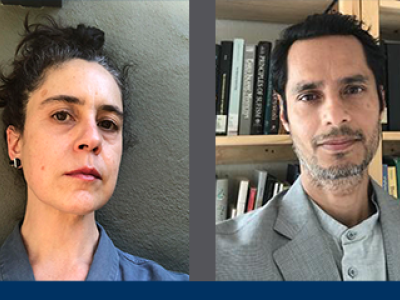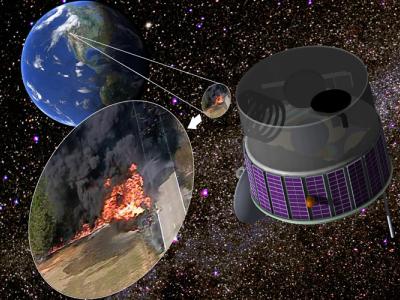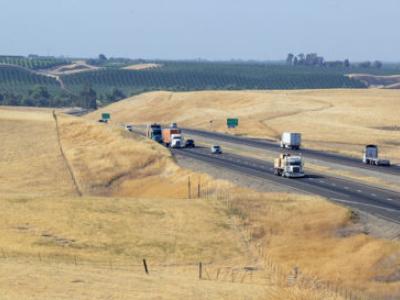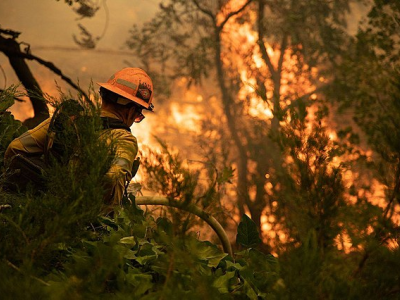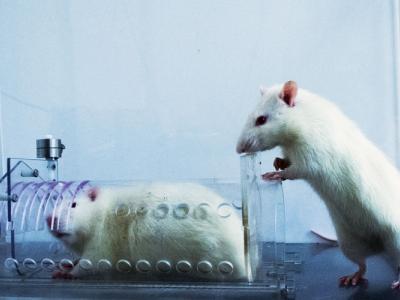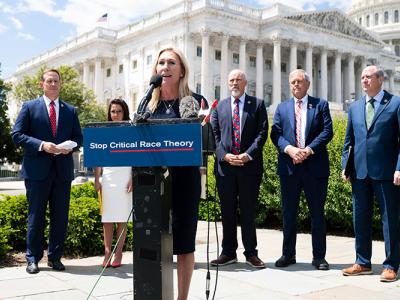A discussion with Dr. John Swartzberg, UC Berkeley Public Health Clinical Professor and globally respected authority on infectious diseases and vaccinology, about the status of the pandemic, and where we should -- or can -- go from here.
Research News
Learn more about UC Berkeley's researchers and innovators.
Showing 961 - 976 of 3459 Results
A project led by Trevor Keenan has received $2 million in funding from the National Science Foundation (NSF) to continue essential research in understanding ecosystem-atmosphere interactions, and the response of these to environmental change. Named the FLUXNET Coordination Project, it will link over ten existing national and international networks focused on continuous observations of ecosystem-atmosphere interactions at over 1,000 locations around the world. The project will fill fundamental knowledge gaps in science, engineering, and societal issues associated with ongoing changes in ecosystem function and the related cycling of carbon and water.
Graduate student Kristen LeGault and assistant professor Kimberley Seed, both in the Department of Plant and Microbial Biology, specialize in the evolution of human pathogens and the viruses that infect bacteria, known as phages. Their recent study led to a key discovery about antibiotic and antiviral defense in cholera, as well as phage adaptation.
The National Science Foundation has awarded $20 million over five years to the Georgia Institute of Technology, the University of California, Berkeley and the University of Southern California to establish the National Artificial Intelligence (AI) Institute for Advances in Optimization. The award is among 11 new National AI Research Institutes announced today by NSF.
Less than two months before the recall vote, California Gov. Gavin Newsom holds only a narrow lead among voters most likely to go to cast a ballot, according to a new poll from the UC Berkeley Institute for Governmental Studies (IGS).
The Berkeley Lab Laser Accelerator (BELLA) Center at the Department of Energy’s Lawrence Berkeley National Laboratory (Berkeley Lab) has developed and tested an innovative optical system to precisely measure and control the position and pointing angle of high-power laser beams with unprecedented accuracy – without interrupting or disturbing the beams. The new system will help users throughout the sciences get the most out of high-power lasers.
The Office of the Vice Chancellor for Research and Global, International, and Area Studies, are pleased to announce the appointments of Natalia Brizuela as Chair of the Center for Latin American Studies, and Asad Q. Ahmed, Chair of the Center for Middle Eastern Studies.
Berkley startup, Catena Biosciences, is valued at over $10 million and stands as an example of Berkeley’s change-making spirt: Put entrepreneurial scientists, mission-driven business experts and accomplished faculty in the same space — focused on solving the world’s problems — and innovation will flourish.
California’s fire season is in full swing and could well be worse than in 2020, but new tools are on the way to help responders more rapidly locate wildfires once they break out and, ideally, quickly extinguish them before they get out of control.
More than 700 imaging satellites are orbiting the earth, and every day they beam vast oceans of information to databases on the ground. There’s just one problem: Only those with considerable wealth and expertise can access it. Now, a UC Berkeley team has devised a machine learning system to tap the problem-solving potential of satellite imaging that could bring access and analytical power to researchers and governments worldwide.
Four UC Berkeley research entities have received research awards from California 100, an ambitious statewide initiative to envision and shape the long-term success of the state. The awards, along with technical assistance from the Institute For The Future, will enable the Berkeley Institute for Young Americans, the Center for Environmental Public Policy, the Graduate School of Education and the Terner Center for Housing Innovation to evaluate current facts, origins and future trends in issues critical to California’s next century.
Three decades ago, child development researchers found that low-income children heard tens of millions fewer words in their homes than their more affluent peers by the time they reached kindergarten. This “word gap” was and continues to be linked to a socioeconomic disparity in academic achievement.
Our understanding, planning, and response to wildfires benefit from connections with data and computing sciences. Recent developments in machine learning and simulations can help first responders detect fires earlier, predict fires’ paths and limit blazes quickly. Through collaborations with practitioners in other fields like microbiology and forest management, these tools are answering previously intractable questions about fires that can inform policy and practice.
Magnetars are bizarre objects — massive, spinning neutron stars with magnetic fields among the most powerful known, capable of shooting off brief bursts of radio waves so bright they’re visible across the universe. A team of astrophysicists has now found another peculiarity of magnetars: They can emit bursts of low energy gamma rays in a pattern never before seen in any other astronomical object.
A decade after scientists discovered that lab rats will rescue a fellow rat in distress, but not a rat they consider an outsider, new UC Berkeley research pinpoints the brain regions that drive rats to prioritize their nearest and dearest in times of crisis. It also suggests humans may share the same neural bias.
Late last year, after the police murder of George Floyd, the right-wing mediasphere began to turn its attention to a scholarly field little known outside of law schools and other academic outposts: critical race theory. Following the victory of Democrats Joe Biden and Kamala Harris, the blast furnaces of conservative strategic communication have transformed critical race theory into something law professor Khiara M. Bridges doesn’t recognize.


